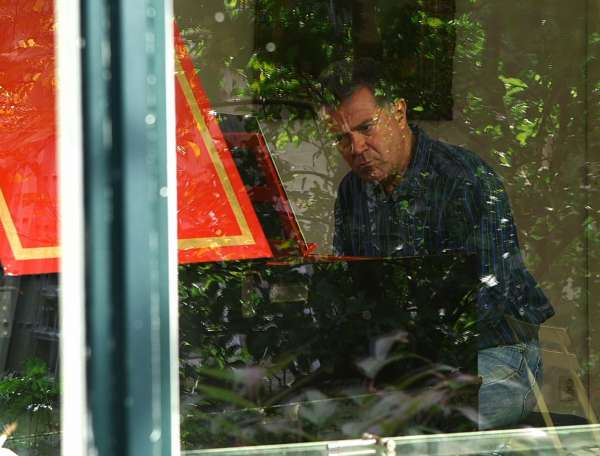

15 inventions
BWV 772-786 performed by Johannes Asfaw, Kanji Daito, Evander Eijsink, Domonkos Hegyi, Anna Kuvshinov, Frank Monster, Peiting Xue and David Zielman
Ottone, Utrecht
Behind the music
Teaching them young
Bach did not make things easy for his pupils in their first lessons
No piece of music can do without ingenious ideas or inventions. But the name invention is also used for a very special genre with a colourful history, to which Bach’s 15 short keyboard pieces also belong.
Like the ricercares of the Renaissance and early Baroque, Bach’s 15 inventions are experiments (here very concise ones) on a musical idea, a theme and a new way of combining lines. In tiny doses, the player can thus familiarise himself with the effect of music and with Bach’s genius.
Bach’s 15 inventions are in the Klavierbüchlein, the exercise book that Bach compiled around 1720 for his eldest son, Wilhelm Friedemann. Three years later, he further underlined his didactic aim: the pupil was to practice two-part playing, learn how to deal with musical ideas and get a taste of composition. The 15 inventions were therefore the first step in Bach’s teaching method for keyboard. The 15 inventions are followed in the Klavierbüchlein by the French and English Suites, and the collection concludes with Das Wohltemperirte Clavier.
The 15 inventions are dominated by imitation, as is to be expected in two-part Baroque music. After all, two-part texture is the simplest form of counterpoint. Bach went on to structure his method with care. In the exercise book for Wilhelm Friedemann, he organised the inventions by theme: the first three (numbers 1, 4 and 7) are based on scales, and the next three (numbers 8, 10 and 11) on broken chords, followed by a combination of both in Invention no. 14, which is almost a fugue in form.
The order in Bach’s later, definitive manuscript from 1723, however, corresponds to the system of the keyboard. Just as later on, in Das Wohltemperirte Clavier, the order is chromatic, alternating between major and minor. Bach did, however, leave out the most difficult keys with lots of sharps or flats. Beginners on the keyboard only got those keys dished up later on.
- BWV
- 772-786
- Title
- 15 inventions
- Instrument
- harpsichord
- Genre
- harpsichord works
- Serie
- Klavierbüchlein für Wilhelm Friedemann Bach
- Year
- 1720-1723
- City
- Köthen
- Special notes
- The earliest source for the Inventions, the Klavierbüchlein für Wilhelm Friedemann Bach, only became available to the public in 1932. All the editions up to then had been based on the autograph from 1723.
Extra videos
Vocal texts
Original
Translation
Credits
-
- Release date
- 22 April 2016
-
- Recording date
- 16 April 2016
-
- Location
- Ottone, Utrecht
-
- Harpsichordists
- Johannes Asfaw, Kanji Daito, Evander Eijsink, Domonkos Hegyi, Anna Kuvshinov, Frank Monster, Peiting Xue en David Zielman
-
- Masters
- Pieter-Jan Belder, Menno van Delft, Siebe Henstra, Tineke Steenbrink
-
- Harpsichord
- Bruce Kennedy, 1989 naar Michael Mietke
-
- Film director and editor
- Lucas van Woerkum
-
- Camera
- Maarten van Rossem, Robert Berger, Richard Spierings
-
- Camera assistants
- Luuk Walschout
-
- Music recording producers
- Guido Tichelman, Bastiaan Kuijt
-
- Music edit and mix
- Guido Tichelman
-
- Lights
- Zen Bloot
-
- Interview
- Gijs Besseling, Noah Pepper
-
- Project manager
- Hanna Schreuders
-
- Producer concert
- Imke Deters
-
- Producer film
- Jessie Verbrugh
-
- With financial support from
- Rabobank
Discover
Help us to complete All of Bach
There are still many recordings to be made before the whole of Bach’s oeuvre is online. And we can’t complete the task without the financial support of our patrons. Please help us to complete the musical heritage of Bach, by supporting us with a donation!

